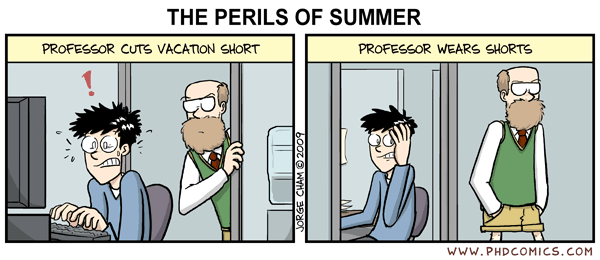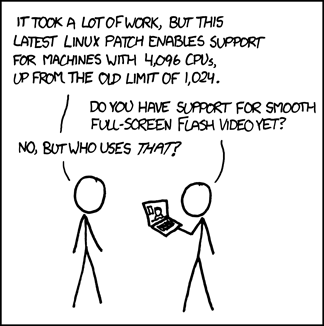


Since browsing began I have been collecting images I have found online. Everything from humor to teaching material has ended up being stored and transferred between computers. Since hard disks keep getting bigger this has never been a problem. Unfortunately there is a problem when I want to use the images I have found – legally. In many situations the photographer is unknown. Sometimes, but very rarely, the image filename includes a clue to the photographers identity.
For photographers the problem is related but different. It is important for them to be able to find out where and who is using their photographs without permission.
One solution many of us have been waiting for is image search engines. The idea is that you upload an image that is then searched for on the whole web. It’s google images but using an image as a search term. The closest example of this today is the search engine Tineye but it needs to be developed. It now has a limited database of about 1.2 billion images (Facebook, Photobucket and Flickr alone combine for over 18 billion images).
But Plagiarism Today reports some good news in this area. Corrigon is a new version of this image search. You upload images to Corrigon these are added to their database while the service then crawls the Web, looking for matching images.
What makes Corrigon unusual is that it doesn’t store the images, but rather, fingerprints them and compares the fingerprint against other matches it finds on the Web. This is very similar to what C-registry.us is doing with its matching technology. However, where C-Registry is more geared toward preventing works from becoming orphans, Corrigon is more about image search (though C-Registry has added image search)
So there is some slow progress in this area. Maybe someone at google will come along and develop a simple, elegant and easily available service as a complement to the basic search.
A variation to this problem is the mass of images I take myself. Here the problem is not that I am unable to use my own pictures but rather that I cannot find the one image I know I am looking for. It’s there somewhere but with so many thousands of images it may as well be lost forever. Don’t know how this could be resolved without a massive identifying and tagging effort on my part.
Photography lecturer Simon Burgess teaches photography at East Surrey College. During the course in Higher National Diploma in Digital Photography he displayed photographs by the controversial photographer Del LaGrace Volcano. Apparently one or more of the second year students were less than impressed and have complained to the college. (British Journal of Photography)
Burgess has been called to a hearing to defend his actions and in the worst case he may be fired. The college told the British Journal of Photography: “Until the facts are raised in a hearing, we cannot comment about staff-related actions.”
It is good that the college wants to know the facts before discussing the problem with the media. BUT. The ability of students to complain about content is becoming strange. Should the lecturer teach what is important for students to learn or should the lecturer limit him/her self to teaching that which does not offend? This would, or should, our ability to teach to a very narrow set of subjects.
Del LaGrace Volcano may be controversial (see quote below) but this cannot in itself be a reason for complaint. It is a dangerous precedent when lecturers are asked to limit themselves to that which is acceptable – for the question is: acceptable to whom? The students are there to be educated, so in theory they should be less knowledgeable. Maybe they need their minds expanded?
As a gender variant visual artist I access ‘technologies of gender’ in order to amplify rather than erase the hermaphroditic traces of my body. I name myself. A gender abolitionist. A part time gender terrorist. An intentional mutation and intersex by design, (as opposed to diagnosis), in order to distinguish my journey from the thousands of intersex individuals who have had their ‘ambiguous’ bodies mutilated and disfigured in a misguided attempt at ‘normalization’. I believe in crossing the line as many times as it takes to build a bridge we can all walk across.
September 2005
Support for Burgess is growing, Dr Eugenie Shinkle, a senior lecturer in photographic theory and criticism at the University of Westminster’s school of media, arts and design writes (The Sauce):
Management are claiming it is pornography, salacious, grotesque, worthless and not relevant to, or appropriate for 2nd year level three photography students preparing for higher study. Apart from being censorious, backward, and homophobic, management’s stance displays a remarkable ignorance of contemporary debates and image-making strategies. This is a serious matter that has implications for all academics, teachers, and students.
I really hope that the college has the backbone to realize what it it there for and to support their lecturer.
As explained by XKCD…

While technology is a complex and beautiful thing most users would prefer not to know how or why their stuff works. As long as they can watch youtube movies in fullscreen.
Being a big fan of street art I often spend time in new cities looking for interesting examples and in Turin I found some really cool stuff. The two best projects I found were the portrayals of Muslim women and an excellent media criticism project. While I realize that many are critical to what they see as a defacement of public space it is important to remember that art can act as a conduit for social commentary, giving voice to those who might not otherwise have one. This is particularly true in the case of street art since the public street is more easily accessible to the artist than the gallery.
In addition to this these public spaces are available to all people without requiring them to enter into the unfamiliar structured work of “established” art. Many may feel unsure of how “established” art may be interpreted, this coupled with a fear of making a fool of oneself makes it easier to ignore art rather than attempt to participate in the discussion. Street art places no such demands. It is immediate and easily accessible: either you like it, or you don’t. Either it talks to you, or it doesn’t. They are our streets and everyone has a right to an opinion. No hierarchical canon rules our opinions.
The media criticism project was a humorous portrayal of the way in which media controls our minds and makes us into robots.

The Muslim women project was a colorful and thoughtful portrayal of women in everyday situations. My favorite pictures were the ones were the women are interacting with technology and showing that we are all the same.

The artist has presented the motivations for his project in the Wooster Collective:
“My project deals with the representation of Muslim women and their social condition. I was been studying and dealing with this theme for years. As you can imagine, here in Turin, my posters are seen as an ambiguous subject. Some people mislead and rip them, while others love them. I would like to make people know that there is nothing strange with this particular subject: Muslim women are equal if compared to Western women. My Muslim women are represented in daily life situations: they are mothers, grandmothers and daughters, smoking, taking pictures and smiling. My message is: pointing out that Muslim women have the same needs and necessities of the majority of Western women. Certainly, the only exception is the veil. The veil changes in different countries, and here comes the sociological aspect of my work: I am very careful in rendering the different types of veil, the Maghrebi veil, the Afghani burga and the Iranian chador.
In my opinion, nowadays it’s crucial to conceive street art as a tool to spread social messages. Moreover, I made a deep research and I discovered that I am the only artist, in the street art movement, that deals entirely with this topic. Isn’t it strange? In general, the woman is the best source of inspiration for artists, why Muslim women wouldn’t be the same? I would like to create a network of artists of all nations, about this subject, eventually to compare the different viewpoints.
My posters are drawn and coloured freehand, each of them is unique. The subjects are not invented but real, I use images taken from newspapers, magazines and websites. Often they are portraits of important personalities of Muslim society (novelists, poets, entrepreneurs, feminists etc…), in order to make Western societies know who they are and what they do.”… BR1 on Flickr
On Friday Shepard Fairey was sentenced to two years’ probation by the Boston Municipal Court. The sentence is based upon the images he posted on public and private property over the years. (via Designboom)
the well-known illustrator and graphic designer has pleaded guilty to three charges of vandalism, including defacing property and wanton destruction of property under 250 USD. he had 11 other chargers which have been dropped. he has been fined 2,000 USD for graffiti removal. Designboom
Fairey’s most widely spread and famous work (probably) is the André the giant obey mashup (or whatever it should be called).

Multi-affiches Boulevard St Germain 06e? .jpg by yoyolabellut (CC BY-NC-ND)
But he reached new peaks of fame for his wonderful “hope” poster designed during the Barack Obama campaign.

Obama Posters by el clinto (CC BY-NC-ND)
Is this the plight of all known street artists who become famous enough to be identified?

It’s the sad truth – XKCD understands the tecchie lifestyle.